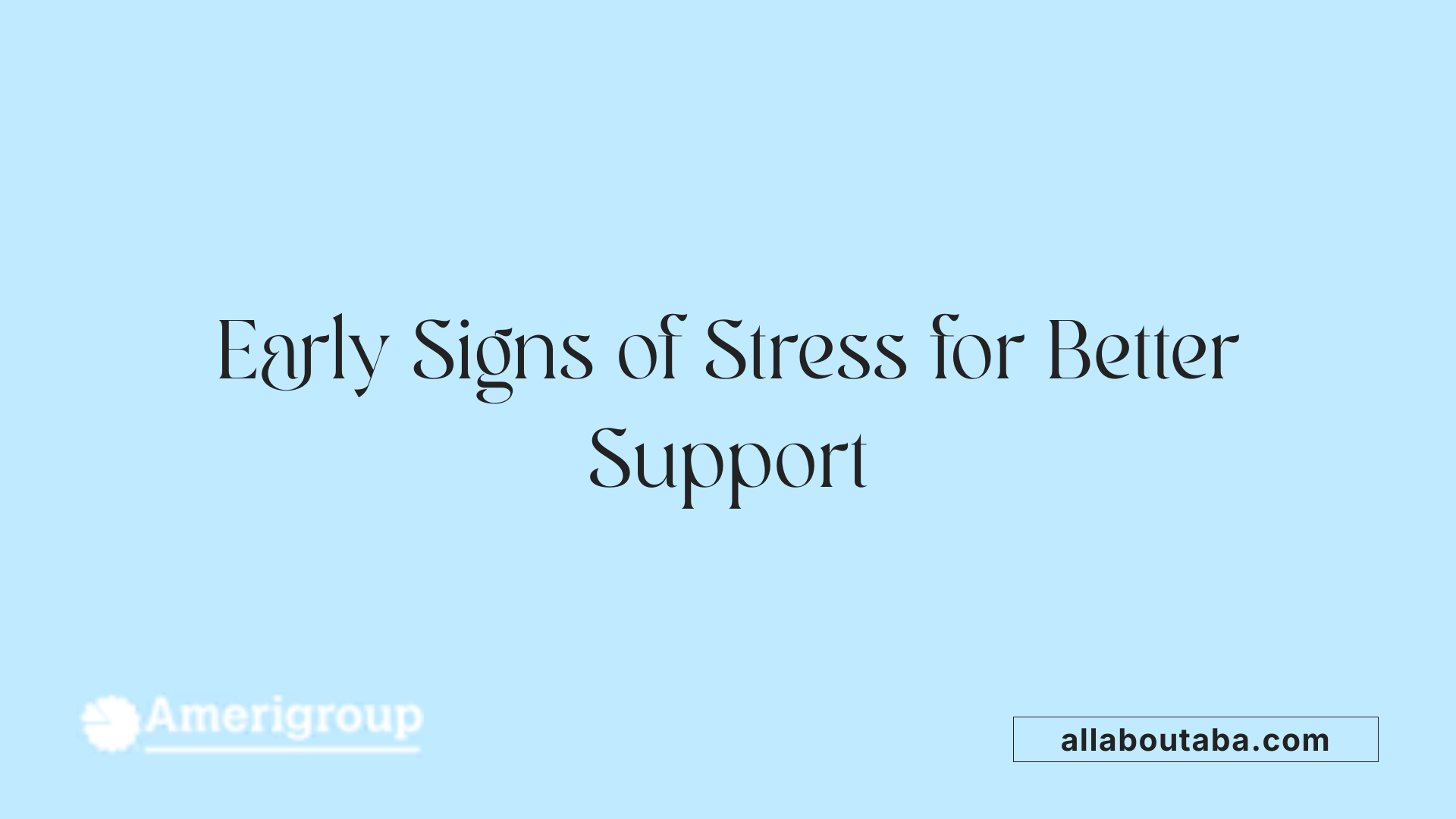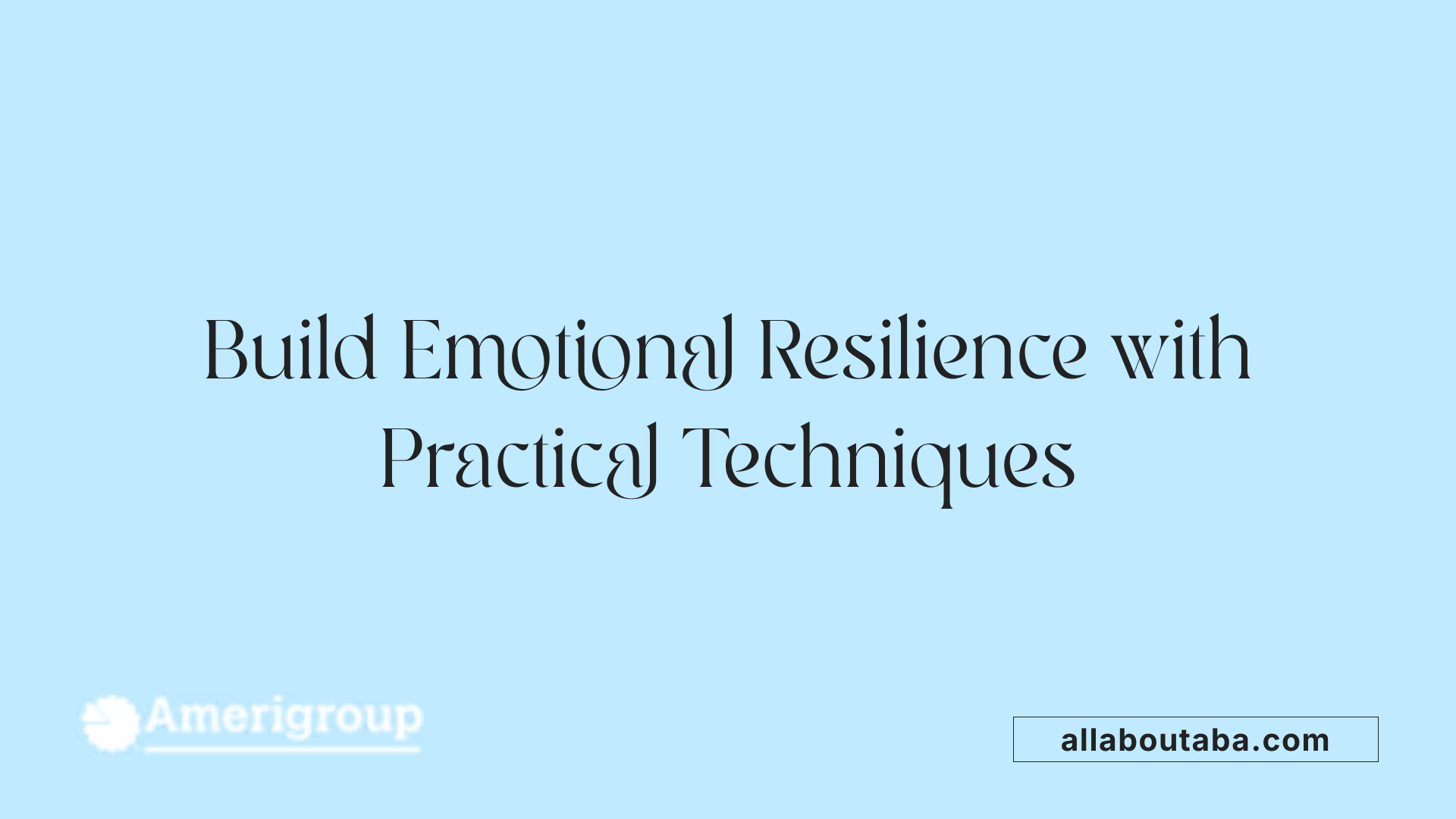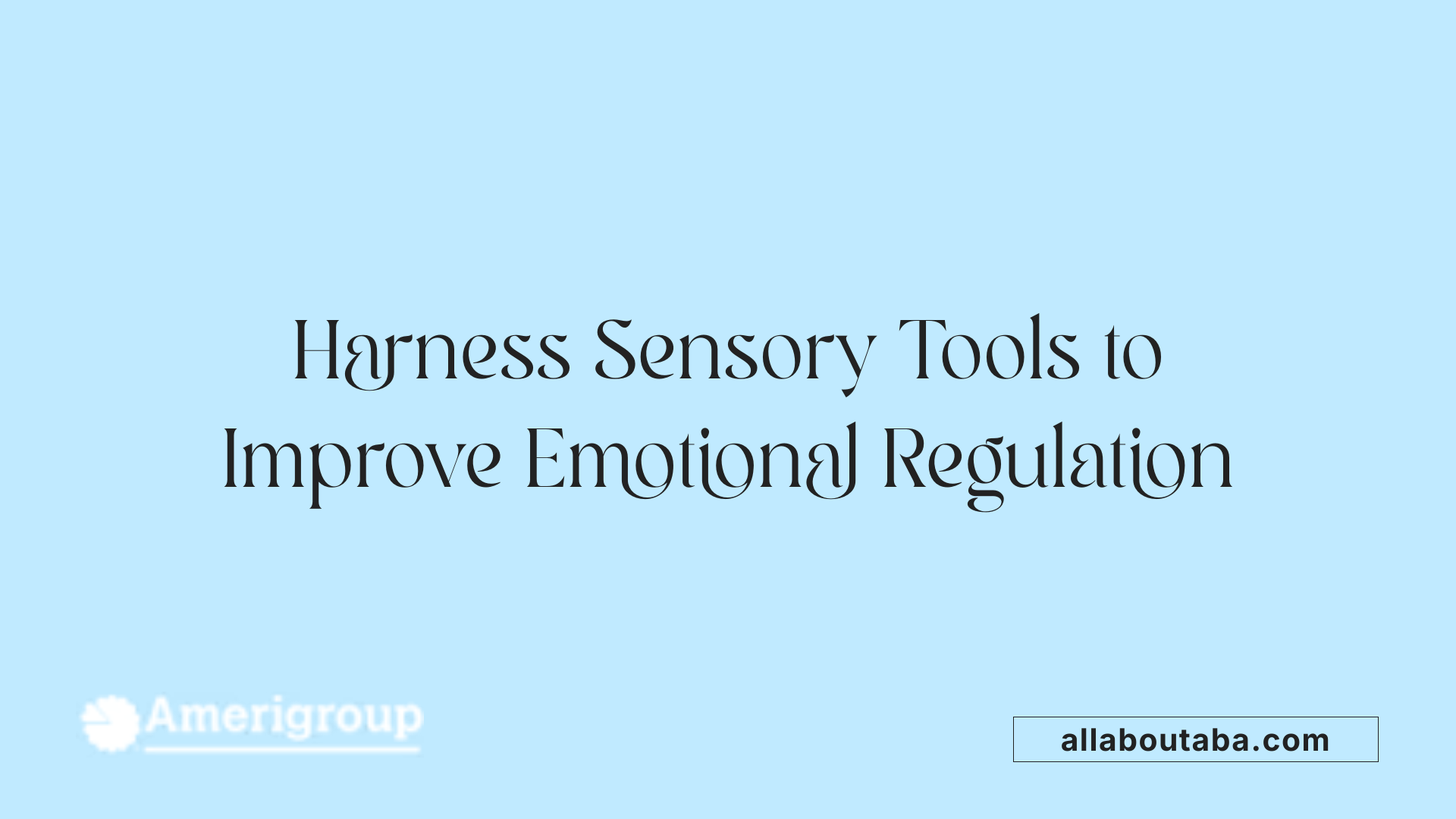Understanding and Enhancing Coping Strategies for Teenagers with Autism
Autistic teens often face unique challenges that require targeted strategies to manage stress and emotional overwhelm. Developing effective coping skills not only improves their emotional well-being but also fosters independence and resilience. This article explores practical approaches, supported by expert recommendations and evidence-based practices, to help caregivers, educators, and teens themselves build a toolkit for handling life's challenges.
Recognizing Stress Triggers in Autistic Teens

What are some situations that commonly trigger stress or anxiety in autistic children?
Autistic children often experience anxiety or stress in specific situations that challenge their routines or sensory processing. These include social situations where communication or social norms feel overwhelming, sensory overload from loud noises, bright lights, or crowded places, feeling misunderstood by others, sudden changes in routine, and experiencing emotional overwhelm from various sources.
Understanding these triggers is essential for providing effective support. Recognizing early signs of stress, such as changes in behavior, sleep patterns, or emotional responses, allows parents and caregivers to intervene proactively.
What are effective coping strategies for autistic teens?
Helping autistic teens develop coping skills involves a combination of tailored activities and environmental support. Strategies include:
- Personalized activities: Listening to calming music, engaging in physical exercise, or practicing mindfulness and deep breathing exercises can help manage stress.
- Visual supports: Using emotion cards, facial expression matching games, and visual charts helps teens identify and label their feelings, fostering emotional self-regulation.
- Sensory tools: Fidget toys, weighted blankets, noise-cancelling headphones, and access to quiet, sensory-friendly spaces assist in reducing sensory overload.
- Structured routines: Maintaining predictable daily routines, preparing for known changes, and developing structured plans reduce uncertainty and anxiety.
- Social skill development: Role-playing, social stories, and guided discussions help teens navigate social situations more comfortably and build confidence.
How does building coping skills benefit autistic children?
Building coping skills can significantly reduce anxiety levels and help children manage their emotional responses better. Improved emotional regulation can lead to fewer behavioral challenges during stressful situations. Over time, these skills foster resilience, enabling children to handle life's changes more adaptively and positively influence their overall well-being.
Support strategies for parents and caregivers
Parents can play a vital role by teaching coping mechanisms and recognizing early signs of stress. Consulting with professionals like occupational and physical therapists provides additional tailored strategies. Introducing coping techniques early in life ensures that children develop lifelong skills to manage stress effectively.
Importance of early intervention
Implementing coping strategies during childhood not only benefits the present but also offers long-term advantages. The skills acquired can support autistic adults in managing stress and emotions, promoting independence and a higher quality of life.
Additional challenges during stressful times
During periods of uncertainty or change, autistic individuals may face difficulties such as comprehension challenges, communication barriers, a strong preference for sameness, and a higher risk for developing anxiety or depression. Recognizing these challenges enables caregivers to adapt their support methods.
Support strategies during uncertain times
Seven practical strategies to support autistic individuals through stress include:
| Strategy | Description | Practical Example |
|---|---|---|
| Support understanding | Use concrete language, social narratives, and visual cues | Explaining health situations with pictures and simple words |
| Opportunities for expression | Encourage sharing feelings through various outlets | Art, music, or storytelling-based activities |
| Coping and calming skills | Teach relaxation and self-management techniques | Deep breathing exercises or guided imagery |
| Maintain routines | Keep daily activities predictable | Consistent sleep schedules and visual routines |
| Build new routines | Establish stability during transitions | Creating quiet zones or new daily pathways |
| Foster connections from a distance | Use technology for social contact | Scheduled video calls with friends and family |
| Monitor changing behaviors | Watch for signs of anxiety or depression | Changes in sleep, eating, or repetitive behaviors |
Understanding and applying these strategies can help mitigate stress and promote emotional stability in autistic children and teens.
Common Coping Strategies for Stress Management

What are some effective coping strategies for autistic teens?
Autistic teenagers often face unique challenges when it comes to managing stress and anxiety. Implementing a variety of coping mechanisms tailored to their needs can greatly help in easing emotional overwhelm.
One highly effective approach is incorporating activities like listening to music. Music therapy allows teens to relax, express feelings, and even regulate their emotions more easily. Engaging in physical activities such as walking, running, or other exercises not only promotes physical health but also helps to release built-up tension.
Deep breathing exercises and mindfulness practices serve as powerful tools for calming the mind and body. Techniques such as slow, mindful inhalation and exhalation help teens center themselves during moments of stress. Visual aids like emotion cards, facial expression matching games, and charts displaying emotional levels can assist teens in recognizing and labeling their feelings, fostering better emotional self-awareness.
Sensory tools, including fidget toys, weighted blankets, noise-canceling headphones, and sensory-friendly spaces, are crucial for alleviating sensory overload, which is common among autistic individuals. These aids provide sensory input that can soothe the nervous system.
Additionally, establishing structured routines and preparing for potential changes in advance reduces anxiety related to uncertainty. Creating a clear, predictable schedule offers comfort and stability.
Supporting social interactions through role-play and social stories helps improve social skills and resilience. This proactive approach teaches teens how to navigate social situations more effectively.
A combined approach—using music, physical activity, sensory tools, relaxation techniques, and structured routines—can enhance emotional regulation and help autistic teens develop resilience against stress.
Below is a summary of popular coping strategies:
| Coping Strategy | Description | Additional Notes |
|---|---|---|
| Music therapy | Listening to favorite tunes to relax and express feelings | Can be personalized with preferred genres |
| Walking and exercise | Physical activity to reduce tension and boost mood | Incorporate outdoor walks if possible |
| Deep breathing and mindfulness | Focused breathing exercises to calm the nervous system | Use visual aids or smartphone apps for guidance |
| Pleasant activities | Engaging in hobbies like art, dance, or playful activities | Foster creativity and emotional expression |
| Sensory and fidget toys | Tools like fidget spinners or textured objects | Use during stressful moments to regain focus |
| Prayer and meditation | Spiritual or reflective practices for mental peace | Adapt to individual beliefs and preferences |
By integrating these strategies, parents and caregivers can better support autistic teens, enabling them to manage stress effectively and build emotional resilience for the future.
Key Strategies by Henry Ford Health for Managing Change and Stress
What are some techniques to help autistic teens regulate their emotions during difficult times?
Helping autistic teens manage their emotions effectively involves implementing personalized and structured coping strategies. These techniques are designed to meet their specific needs and reduce emotional overwhelm.
One effective approach is to use slow, controlled breathing exercises. Deep breathing can calm the nervous system and help teens regain focus during stressful moments. Mindfulness practices, including guided meditation or sensory mindfulness, also foster emotional awareness and resilience.
Visual supports are particularly beneficial — tools like emotion charts or visual cues from programs like the Zones of Regulation allow teens to identify and label their feelings accurately. This awareness helps them employ appropriate coping strategies when emotions intensify.
Sensory tools such as weighted blankets, stress balls, or noise-canceling headphones can soothe sensory sensitivities and prevent sensory overload, which often triggers emotional outbursts.
Creating a calm and predictable environment enhances feelings of safety and control. Involving teens in developing their regulation plan encourages independence and empowers them to self-manage their emotions.
Early recognition of signs indicating emotional escalation is crucial. Teaching teens to identify these signs allows for timely intervention with coping mechanisms like taking a break, practicing deep breathing, or using positive self-talk.
These strategies—when tailored to each individual—can significantly reduce meltdowns, promote emotional resilience, and foster greater self-regulation in autistic teens.
The Impact of Developing Coping Skills on Emotional Well-Being
What are common coping strategies for managing autism-related stress and anxiety?
Managing stress and anxiety in autistic children involves a variety of coping strategies that can promote emotional stability and overall well-being. One foundational approach is practicing mindfulness techniques, such as deep breathing exercises and body scans, which help regulate emotions during stressful moments.
Sensory tools play a vital role in alleviating sensory overload—a common challenge for autistic individuals. Items like noise-canceling headphones, weighted blankets, or sensory-friendly spaces provide environments where children can regain composure and feel secure.
Establishing predictable routines, supported by visual schedules, assists children in understanding what to expect, reducing uncertainty that can foster anxiety. Identifying personal triggers allows caregivers to create tailored strategies for avoidance or management.
Engaging in calming and enjoyable activities like listening to music, going for walks, or participating in art or music hobbies can significantly lower stress levels. These activities promote a sense of control and relaxation.
Seeking professional support, including modified cognitive-behavioral therapy (MCBT), can address specific anxiety patterns. Educating caregivers and the broader support network is equally important, as it enhances the child's resilience and helps reinforce coping mechanisms.
By integrating these strategies early, children learn effective ways to handle stressful situations, which can lead to improvements in emotional well-being, reduced anxiety levels, behavioral enhancements, and an overall better quality of life. Fostering these skills offers lifelong benefits that extend into adulthood, empowering autistic individuals to navigate various challenges with confidence.
Sensory Coping Skills and Their Role in Emotional Regulation

How can sensory coping skills assist autistic individuals?
Sensory coping skills play a vital role in helping autistic individuals manage the sensory sensitivities that can often lead to stress or emotional overwhelm. These skills include a variety of strategies and tools designed to provide calming input and create a more manageable sensory environment.
One effective method is the use of sensory tools such as fidget toys, weighted blankets, and noise-canceling headphones. These items help reduce sensory overload by providing acceptable distractions or calming stimuli, allowing the person to regain composure.
Adjusting the environment is another important step. Modifying lighting, textures, and sounds in a space can prevent sensory overload. Creating a quiet, comfortable corner with familiar textures and low lighting can serve as a safe space during moments of distress.
Scheduled sensory breaks are also crucial. These include planned pauses where the individual can engage in sensory activities like swinging, rocking, or using sensory gels. Regular breaks can preempt extreme reactions, helping to maintain emotional balance.
Self-regulation techniques such as deep breathing exercises, body movements, and mindfulness practices enable individuals to calm themselves actively. Teaching these skills fosters independence and empowers autistic individuals to better handle challenging situations.
Overall, integrating sensory coping skills into daily routines supports emotional regulation, reduces anxiety, and enhances overall well-being. By managing sensory input effectively, autistic people can participate more comfortably in social environments and improve their quality of life.
Challenges Faced by Autistic Teens and Support Approaches
What are some common challenges faced by autistic teens and ways to address them?
Autistic teenagers often encounter a variety of difficulties that can affect their daily lives and emotional well-being. Some of the most common challenges include managing sensory overload, regulating emotions, engaging in social interactions, and dealing with executive functioning deficits.
Sensory overload occurs when typical environmental stimuli—such as bright lights, loud noises, or crowded settings—become overwhelming. To help mitigate this, using sensory tools like noise-canceling headphones, sensory toys, or quiet spaces can provide relief and help teens regain composure.
Emotion regulation is another significant challenge. Autistic teens may experience heightened anxiety, frustration, or sadness, which may lead to behaviors like self-harm or aggression. Teaching emotion labeling through social stories, emotion cards, and facial expression matching can foster self-awareness. Techniques like deep breathing, mindfulness, and calm-down routines, supported by visual aids, are effective in helping them manage emotional responses.
Social interaction difficulties often stem from challenges in understanding social cues or maintaining conversations. Providing social skills training, role-playing scenarios, and opportunities to practice with peers or therapists can improve their confidence and competence in social settings.
Executive functioning deficits, which impair planning, organization, and flexibility, make daily tasks more difficult. Visual schedules, checklists, and structured routines can promote independence. Building new routines during transitions—such as adjusting to school changes or new activities—is also beneficial.
Supporting their mental health and fostering resilience is vital. Autistic teens are at increased risk of anxiety, depression, and sleep disturbances. Early intervention, consistent routines, and emotional support from family, teachers, and mental health professionals create a stable environment for growth.
Behavioral challenges like aggression or refusal are addressed through positive behavioral strategies. Understanding the reasons behind certain behaviors helps develop personalized coping plans. Additionally, involving professionals like occupational therapists and psychologists can provide tailored interventions.
Overall, a comprehensive, personalized approach is essential. This includes early intervention, teaching and reinforcing coping skills, offering emotional support, and creating an environment that emphasizes patience and understanding. By focusing on these areas, caregivers and educators can help autistic adolescents develop independence, confidence, and resilience, enabling them to navigate adolescence more smoothly.
Resources and Guides for Building Coping Skills
Supporting autistic children and teens in developing effective coping skills is crucial for their emotional well-being. Various resources are available to help parents, caregivers, and educators implement strategies that foster resilience and self-management.
Online platforms offer a wealth of information, including videos, printable worksheets, and guidance tailored specifically to autistic individuals. For example, the National Autistic Society provides free materials created by autistic individuals, which focus on understanding oneself, emotional regulation, and resilience-building techniques.
Autistic-led organizations are invaluable for providing authentic insights and practical tools. Camps like Camp Worth develop targeted programs that include social stories, visual supports, and stress management strategies tailored to children and teens with autism.
Evidence-based programs such as UCLA’s PEERS focus on social skills training, which indirectly supports emotional regulation and reduces anxiety. These programs teach skills like problem-solving, sharing feelings, and understanding social cues, all of which enhance coping abilities.
Visual supports and social stories are highly effective in clarifying expectations and normalizing emotional experiences. Using visual cues such as emotion cards, facial expression games, and social narratives helps children recognize and label their feelings, which is an essential step before teaching them coping techniques.
Professional guidance from occupational therapists, speech therapists, and psychologists can further personalize support plans. These experts help identify early signs of stress, teach self-regulation strategies, and adapt routines to suit individual needs.
To summarize, a combination of accessible online resources, autistic-led initiatives, evidence-based programs, visual tools, and professional advice creates a comprehensive framework. This approach enables children and teens with autism to develop essential coping skills, leading to improved emotional resilience and better management of stressful situations.
Empowering Teens for a Resilient Future
Building coping skills in autistic teens is a crucial step toward fostering emotional resilience, independence, and well-being. By recognizing stress triggers, implementing personalized strategies, and utilizing available resources, caregivers and educators can create supportive environments where teens feel understood and equipped to face challenges. Early intervention and ongoing support are key to ensuring these skills translate into lifelong benefits, empowering autistic individuals to navigate their world with confidence and resilience.
References
- Autism Coping Skills: What You Need to Know
- Supporting Individuals with Autism through Uncertain Times - AFIRM
- Active coping autistic children and youth: The varying roles of ...
- What Coping Strategies Can We Teach Children with Autism?
- Ways to De-Stress for Individuals with Autism | Sunfield Center
- 20 Tips for Managing Anxiety for Autistic Individuals
- Resilience and Coping Strategies in Adults with Autism Spectrum ...
- Autism Coping Skills: What You Need to Know
- Stress & Anxiety Reduction - Autism Research Institute







